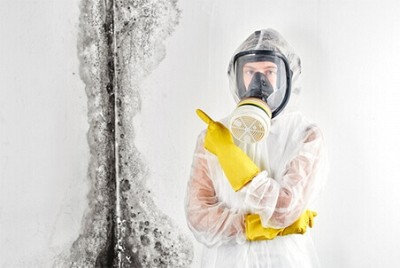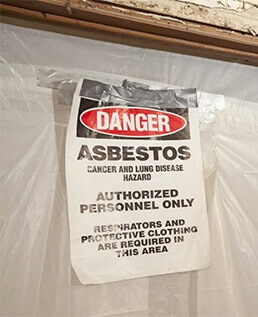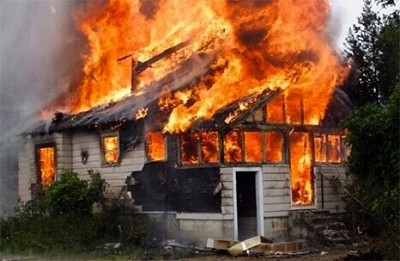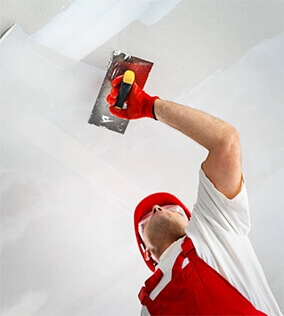How to Identify Potential Asbestos-Containing Materials in Your Mississauga Home
Posted in Asbestos Removal, on February 21, 2024
Asbestos in your home is a common concern for many Canadian homeowners. Mined and used in the late 19th century, it is commonly found in building materials. It is now understood to be a serious health risk, resulting in its legal ban in the construction sector. Despite being banned federally, the mineral is still found in homes and buildings throughout the Greater Toronto Area. If you suspect the presence of asbestos in your property, do not touch it or attempt DIY asbestos removal in Mississauga. Rather, call in professionals for asbestos inspections and asbestos testing in Mississauga. The certified and experienced team at Canada’s Restoration Services will help you safely and effectively eliminate the mineral.
Learn how to identify potential asbestos-containing materials in your home and how experts in asbestos removal in Mississauga can help.
What is Asbestos?
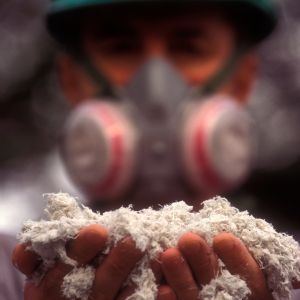 Asbestos refers to a collection of naturally occurring fibrous minerals known for their heat and corrosion resistance. These characteristics have led to its utilization in various commercial applications, including building materials. There are six varieties, all comprising elongated and slender fibrous crystals, with each fiber consisting of numerous microscopic "fibrils" that can be released into the air through abrasion and other mechanisms.
Asbestos refers to a collection of naturally occurring fibrous minerals known for their heat and corrosion resistance. These characteristics have led to its utilization in various commercial applications, including building materials. There are six varieties, all comprising elongated and slender fibrous crystals, with each fiber consisting of numerous microscopic "fibrils" that can be released into the air through abrasion and other mechanisms.
Common Asbestos-Containing Materials
Asbestos was mined and used in building materials at the end of the 19th century. However, when it was discovered that breathing in asbestos was toxic to health, they ceased using it in construction.
Asbestos might persist in antiquated construction materials like:
· Exterior house cladding
· Cement and plaster
· Flooring and ceiling tiles
· Roofing materials
· Bitumen paper
· Roof shingles and felt.
· Surface coatings
· Paint
· Sealant
· Putty
· Drywall
· Caulk
· Spackle
· Industrial heating systems and furnaces
· Insulation, particularly around hot water pipes and tanks
Additionally, certain old automotive parts could contain asbestos, including transmission components in vehicles, such as clutches and brake pads for cars and trucks.
How to Identify Potential Asbestos-Containing Materials
Determining whether a substance contains asbestos isn't possible through visual inspection alone unless it's labelled. This is because fibers are microscopic. If uncertain, it's best to assume the material contains asbestos or seek professional analysis. Professionals in asbestos testing in Mississauga, like Canada Restoration, are recommended for sampling due to their expertise in identifying asbestos and the potential health risks associated with mishandling. Sampling done incorrectly can be more dangerous than leaving the material untouched. DIY sampling is discouraged, but if attempted, precautions must be taken to avoid releasing asbestos fibers. Intact and undisturbed materials should be left alone, with sampling reserved for damaged or to-be-remodeled areas. Those handling asbestos samples should be well-informed on safe practices.
What to Do If You Find Asbestos
If the asbestos material is undisturbed and in good condition, it's best to leave it as is. However, if it becomes a concern, there are two approaches: repair and removal.
Repair typically involves sealing or covering the asbestos material. Sealing, also known as encapsulation, entails treating the material with a substance that binds the asbestos fibres together or coats the material to prevent fibre release. This method is suitable for items like pipe, furnace, and boiler insulation. It should be carried out by a professional trained in safe asbestos handling and asbestos removal in Mississauga. Covering, or enclosure, involves placing a barrier over or around the material to contain the fibres. For instance, exposed insulated piping might be wrapped with a protective jacket.
Major repairs should only be undertaken by professionals with expertise in safe asbestos handling. Minor repairs also carry risks and should ideally be done by professionals, as disturbing asbestos materials can release fibres. DIY minor repairs are strongly discouraged due to the potential hazards. However, if you opt to proceed with minor repairs, ensure you're well-informed about asbestos handling. Contact relevant authorities for information on training programs in your area. Even after training, refrain from attempting anything beyond minor repairs.
Before initiating minor repairs, carefully assess the damaged area to ensure stability. Any damage larger than the size of your hand is considered beyond minor repair. Follow precautions for sampling asbestos material, including wetting it with a mist of water and detergent. Commercial products for filling holes and sealing damaged areas are available, as well as special fabrics for covering small sections of material like pipe insulation.
Removal is typically the more costly option and should be a last resort unless mandated by regulations. It poses the highest risk of fibre release and should only be carried out by a trained contractor such as Canada Restoration. Improper removal can elevate health risks for you and your family.
Safe Detection & Asbestos Removal in Mississauga
While homeowners can gather samples for testing, opting for a trained asbestos specialist ensures greater safety for both you and your family. Working with Canada Restoration ensures full-proof results and will advise you further on how to deal with the problem. Canada Restoration possesses the expertise and specialized equipment needed to tackle the issue of asbestos properly.



